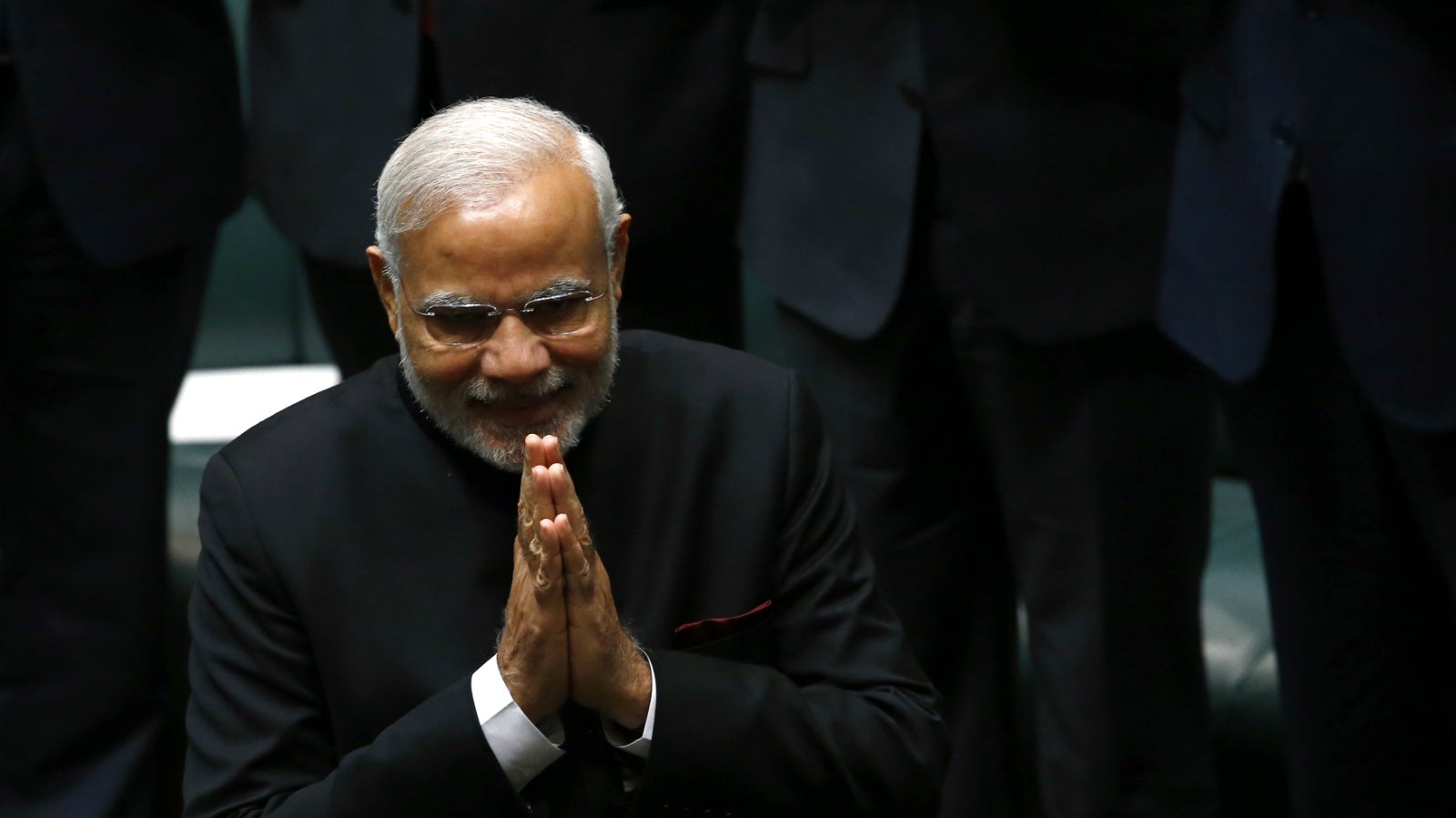The lessons India Inc. should take away from Germany
Narendra Modi will be on his first official visit to Germany when—together with the country’s chancellor Angela Merkel—he will open the Hannover Messe on April 12.


Narendra Modi will be on his first official visit to Germany when—together with the country’s chancellor Angela Merkel—he will open the Hannover Messe on April 12.
The annual Messe is the world’s biggest industrial fair—and India is this year’s partner country. More than 100 Indian CEOs are expected, and more than 450 Indian companies will be represented, making it India’s largest representation in Hannover to date.
The “Make in India” campaign will be showcased, aimed at raising foreign investment interest in India as a manufacturing destination.
But what ideas might Modi and his team take back from Germany? Despite obvious differences between them, there are aspects of Germany’s economic success that are of great relevance to India, especially in view of the Modi administration’s stated priority—the need to create jobs for India’s burgeoning workforce.
Germany’s industrial achievements rest upon a combination of state-supported entrepreneurship, decentralised administration, and a strong traditional appreciation for skills and craftsmanship. Each is relevant in the Indian context given the country’s engrained entrepreneurial ethos, family firm tradition, vast micro, small and medium-sized enterprise (SME) sector, and federal political system.
Recognising these parallels, Indian policy-makers should examine the structural features that sustain Germany’s system of industrial innovation and investment.
Industry accounts for almost 29% of Germany’s total gross domestic product, and employs around 25% of the population—much higher proportions than other advanced economies. It is one of the world’s largest and most technologically advanced producers of iron, steel, coal, cement, chemicals, machinery, vehicles, machine tools, electronics, automobiles, food and beverages, ships, and textiles.
Large multinationals like BMW, Volkswagen, and Siemens are crucial players, but it is the Mittelstand companies that are depicted as the country’s “hidden champions.” Hidden, because although 99% of Germany’s companies are categorised as Mittelstand (typically a medium-sized family business with unity of management and ownership and focused on a single product category), their names are often not known.
Nevertheless, these companies contribute nearly 52% of the country’s economic output, employ more than 15 million people, and are suppliers to multinational corporations as well as being exporters in their own right. Emerging over more than a century, the Mittelstand model is something that India needs to closely examine.
How and why did the Mittelstand develop into such a resilient and productive pillar of the German economy?
- The German Mittelstand are usually long-established, family-owned firms, located often in rural areas, thus spreading employment and investment across the country. Following Germany’s re-unification, the state offered tax and investment incentives to Mittelstand companies to set up businesses in the former East Germany. State inducement has been central.
- A decentralised banking and finance system where large numbers of regional and local banking institutions like Sparkassen (independent and locally managed savings banks) and Volksbanken (cooperative banks) concentrate on business activities and Mittelstand clients in the regions where they are situated.
- Linking business and community, Mittelstand firms are the main beneficiaries and supporters of the German apprenticeship system. About 60% of young Germans train as apprentices in a range of fields including manufacturing, IT, banking, and hospitality. The dual training system allows trainees to divide time between classroom instruction at a vocational school and first-hand experience on the job at a company. Employing 83.2% of trainees, the Mittelstand invests in skilled workers for the future. They have been credited for the fact that Germany has a relatively low youth unemployment rate of 7.9%.
- A dense network of institutes support the Mittelstand, for example the prominent Fraunhofer-Gesellschaft (Fraunhofer Society), an independent non-governmental organisation providing high-quality, short-term, applied research that SMEs could not otherwise afford.
These are traditional strengths of the German model that have evolved through history. However, there have also been modern adaptations, for instance, the rise of micro-multinationals, where a number of Mittelstand companies, headquartered in small towns and rural Germany, are world leaders in specialised, niche products or services, with offices and subsidiaries across the globe. Examples include Kärcher’s high-pressure home and office cleaning equipment, Stihl machinery and tools, and PolyClip System food packaging.
These German companies, already advanced, are now studying the next leap forward. The focus of the Hannover Messe this year will be on the next industrial revolution, the fourth after the mechanisation of production using water and steam power, mass production using electric power, and the revolution of electronics and IT. Industrie 4.0, as it is known in German, refers to the high-tech strategy of the German government to promote the digitisation and automation of the manufacturing industry.
Asian countries such as Japan and South Korea have traditionally looked to Germany’s industrial sector, importing concepts like the German-style Meister schools to produce masters of a technical trade. More recently, the UK has taken note, organising “Meet the Mittelstand” events for British SMEs.
In the US, the Fraunhofer Society is held up as a model for president Barack Obama’s government-backed manufacturing and technology institutes to be introduced nationwide. Each of these initiatives is equally relevant for India to meet the challenge of generating jobs and a skilled labour force, stimulating innovation in manufacturing and creating a financial, educational and business ecosystem that serves company and country.
India’s corporate affairs ministry and ministry for skill development and entrepreneurship should be in the front row at the Hannover Fair, and paying close attention.
This post first appeared on Gateway House. We welcome your comments at [email protected].